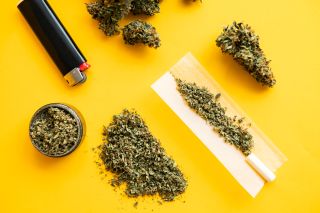Cannabis
How Marijuana Legalization Is Affecting Use
Research shows changes in cannabis use throughout the U.S.
Posted May 31, 2024 Reviewed by Monica Vilhauer Ph.D.
Key points
- New research shows more people are using cannabis than ever before.
- There is no evidence of an increase of cannabis use among teens.
- Despite the stable teen use, adolescents who do use cannabis report using more frequently.

Over the past several decades, marijuana legalization has accelerated across the United States. Cannabis is now legal for recreational use in 24 states and Washington, D.C., as well as for medical use in 38 states and Washington, D.C. Now that it’s more widely available, researchers are asking how legalization is affecting cannabis use.
Not surprisingly, surveys have found that cannabis use is increasing. For the first time on record, more Americans are using cannabis daily than alcohol, according to a new study published earlier this month in the journal Addiction.
The study used data from the U.S. National Survey on Drug Use and Health, which was conducted four times between 1979 and 2022. In 2022, 17.7 million people reported using cannabis every day or nearly every day, compared with 14.7 million who reported using alcohol every day or nearly every day. In 2022, the number of people who reported using marijuana daily was 15 times higher than reported in 1992.
But there are clear health threats to using cannabis products regularly. One systematic review found regular cannabis use impairs cognition, lowers motivation, and can lead to mental health problems.
Part of the trouble is that today’s cannabis is more potent. A 2020 systematic review found that levels of tetrahydrocannabinol (THC), the active ingredient in marijuana, has increased by approximately 2.9 milligrams each year since the 1970s. A gram of cannabis now has two to four times what is considered the standard dose of THC, which typically produces a mild intoxication for non-regular users. Evidence also shows that higher doses lead to higher rates of addiction and psychosis among marijuana users.
Cannabis use may be an increasing public health problem for adults, but what about adolescents?
Surprisingly, data shows marijuana use among teens is flat or slightly declining.
A study published earlier this year in the Journal of the American Medical Association Pediatrics used data from the Youth Risk Behavior survey, which has collected information from more than 900,000 high school students from 2011 to 2021. The study found that after states enacted legal commercial sales of cannabis for adults aged 21 and older, more adolescents reported using no cannabis at all. But at the same time, frequency of cannabis use increased for adolescents who were already cannabis users.
The increased use is a problem because young people are more susceptible to the health risks of using marijuana. A study of 11,000 teens published this month found teens who use cannabis are 11 times more likely to develop a psychotic disorder than those who don’t. (Interestingly, for study participants ages 20 to 33, cannabis was not linked to higher rates of psychiatric disorders.)
The take-home message: Cannabis use is increasing among adults; among younger people, cannabis users are consuming more than they have in the past. These trends could leads to increased risk of mental health disorders.


